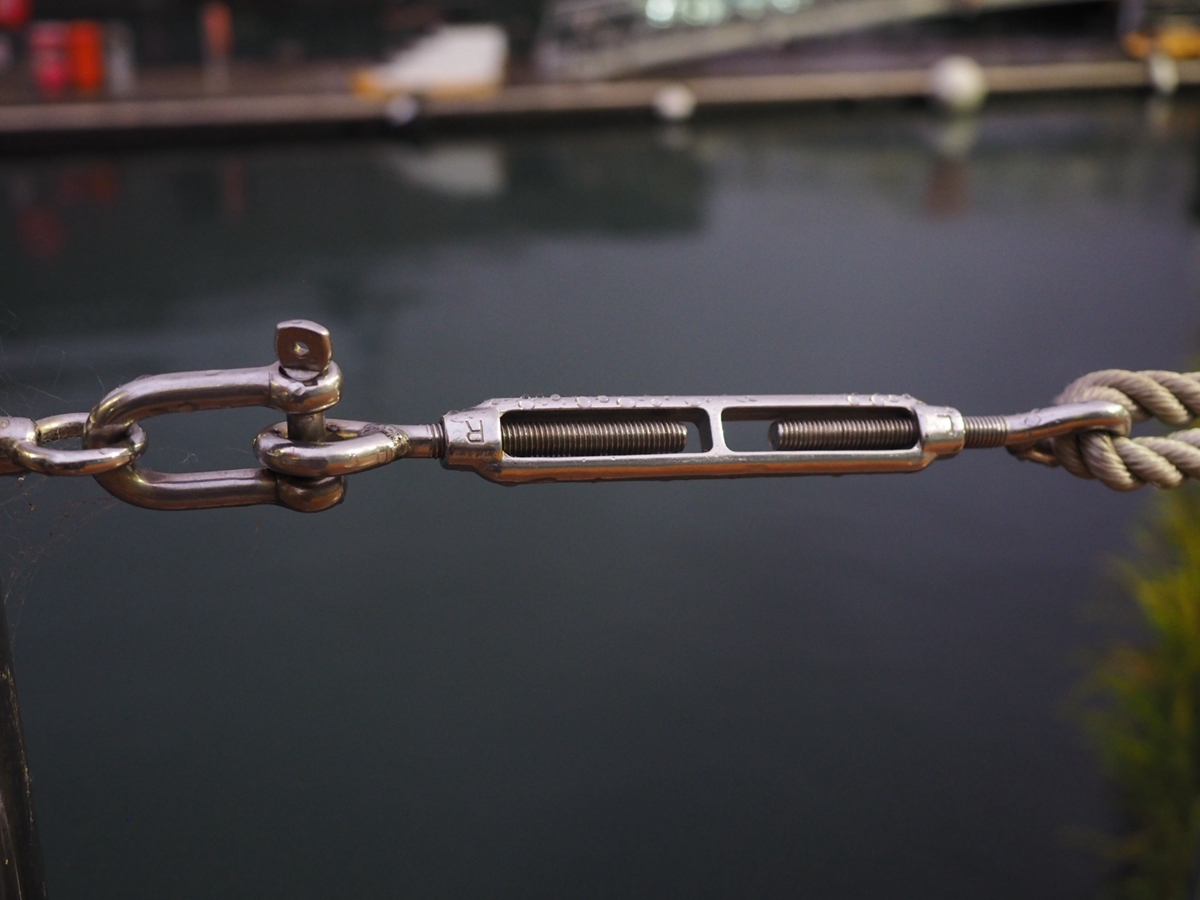Stainless steel eye/eye turnbuckles, tensioners, barrel strainers
AISI 316 stainless steel with a polished finish, these tensioners have an eye at both ends and are popular with fencing, catenarys or any application where you require an inline tensioner to keep your wire tight
Simply rotate the body to open or close the eye ends
Available in diameters 4mm, 5mm, 6mm, 8mm, 10mm and 12mm
A stainless steel eye and eye turnbuckle is a specific type of turnbuckle designed with eye-shaped (looped) ends at both of its extremities. Each eye end of the turnbuckle has a closed circular loop, which can be used to attach cables, ropes, or other tensioning elements.
Here are the key features and uses of a stainless steel eye and eye turnbuckle:
- Material: It is constructed from stainless steel, which provides corrosion resistance and durability, making it suitable for outdoor, marine, and other harsh environments.
- Eye Ends: Both ends of the turnbuckle have eye-shaped loops, which allow for easy attachment of cables or ropes. The closed loop design enhances the security of the connection.
- Threaded Body: The central body of the turnbuckle is threaded, enabling you to adjust the length of the turnbuckle by rotating it. This adjustment capability allows for precise tensioning of the connected elements.
- Versatility: Stainless steel eye and eye turnbuckles are versatile and used in various applications, including rigging, wire rope assemblies, architectural applications, and more. They are ideal for situations where you need to connect, tension, or adjust lines and cables.
- Load Ratings: These turnbuckles come in different sizes and load ratings, allowing you to choose the right one for your specific application based on the load requirements.
- Rust Resistance: The stainless steel construction ensures that the turnbuckle remains resistant to rust and corrosion, even when exposed to challenging environmental conditions, such as saltwater or moisture.
Stainless steel eye and eye turnbuckles are commonly used in rigging, sailing, and architectural applications where maintaining tension or alignment is essential. Their ease of adjustment, resistance to corrosion, and secure attachment make them a popular choice for such purposes.



